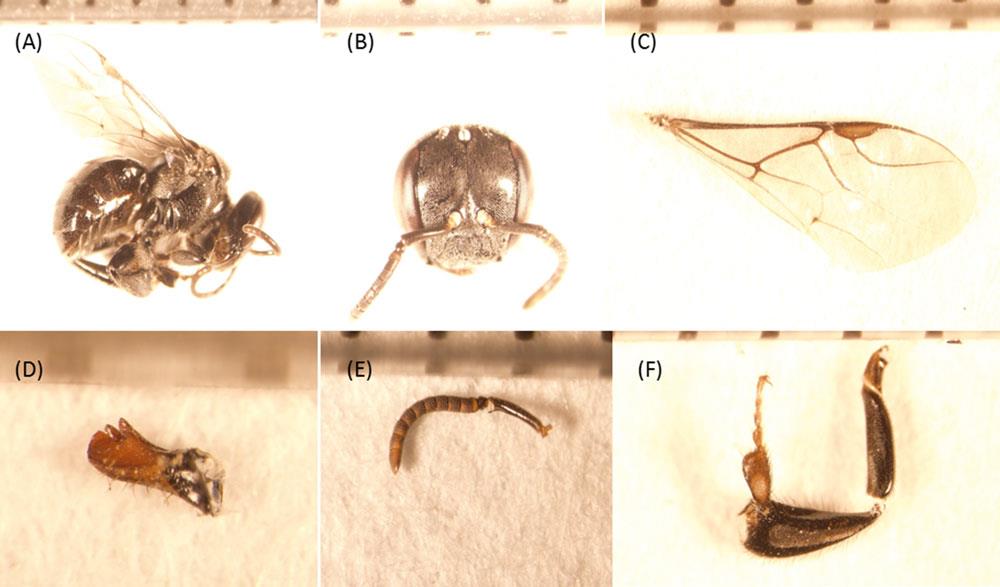The stingless bee Tetragonula gressitti was first collected and identified from South of Vietnam in 1978, and later on discovered in east India in 2013. However, it’s unknown whether the bee species is distributed in China and other neighboring countries or not.
In a study published online in Journal of Apicultural Research, researchers from Xishuangbanna Tropical Botanical Garden (XTBG) and their collaborators reported the first discovery record of a T. gressitti colony from Xishuangbanna, located in the southwest of China.
In Xishuangbanna, some local people still harvest the stingless bee honey via cutting down the tree to open the trunk to obtain the honey for sale. When teaching sustainable honey harvest methods to locals, Mr. Peng Pan noticed the colony was a little bit different from the other stingless bees.
After careful morphological and behavioral observations, the researchers confirmed that the colony was Tetragonula gressitti. The body of the workers was very melanic, body blackish to dark brown. The body length was about 5.5 mm, head width was about 2 mm, and the forewing length was about 4.3mm.
“The rapid nest building behavior and its gentle behavior may indicate T. gressitti is a highly efficient candidate species for meliponiculture in the future”, said Dr. WANG Zhengwei, correspondence author of the study.
Contact
WANG ZHengwei Ph.D
Key Laboratory of Tropical Forest Ecology, Xishuangbanna Tropical Botanical Garden, Chinese Academy of Sciences, Mengla, Yunnan 666303, China
E-mail: wangzhengwei@xtbg.ac.cn

Morphological characters of Tetragonula gressitti. (A). Side view of the individual bee, (B). Head of the individual bee, (C).
Forewing, (D). Mandible, (E). Antenna, (F). Hindleg. (Images by WANG Zhengwei)

